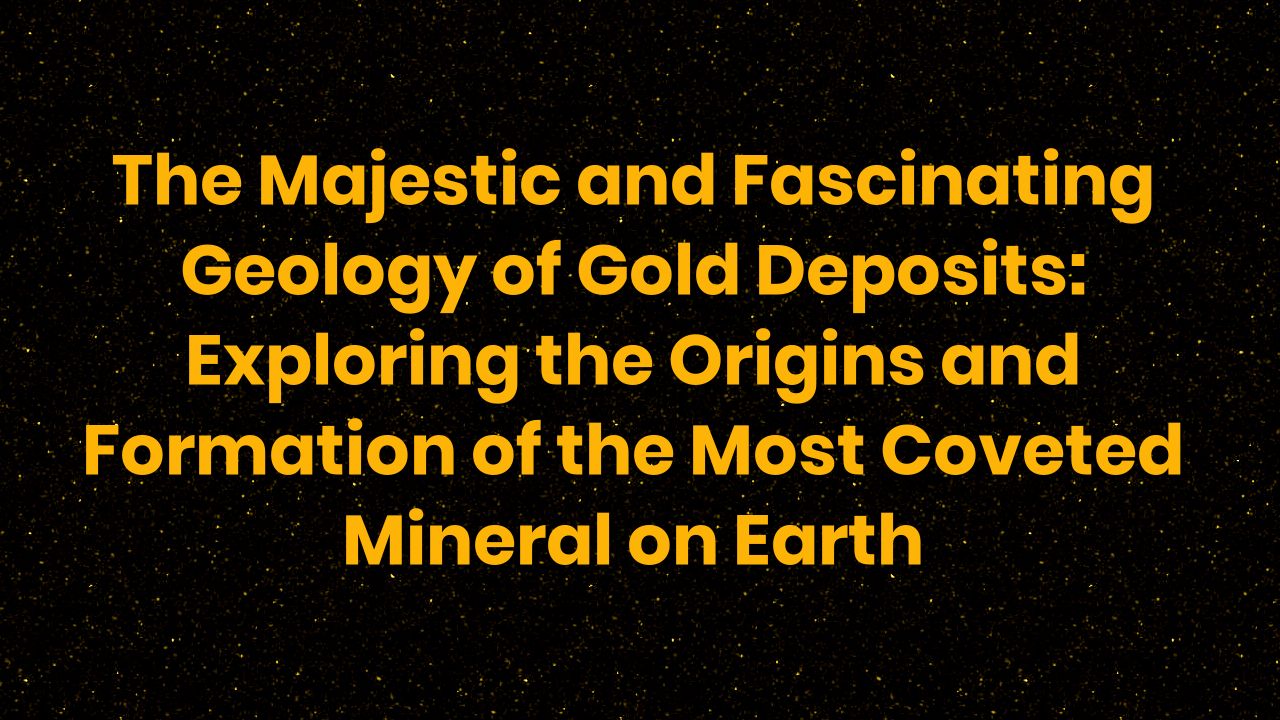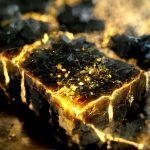
Table of Contents
Introduction: Why Gold is One of the Most Treasured and Coveted Minerals on Earth
Gold has been a precious and sought-after metal throughout history, playing a significant role in shaping human civilization, financial systems, and trade. Its rarity, durability, unique properties and a lustrous, yellow color have made it a symbol of wealth, power, and luxury. Its scarcity made it an object of desire, and many have given their lives searching for it. But what makes gold so special compared to other metals, and where do these deposits come from?
The Geological Processes that Create Gold Deposits: Understanding the Formation of the World’s Riches
Gold deposits are generally the result of complex geological processes that take place over many millions of years. They are formed by various mechanisms, such as hydrothermal activity, sedimentation, erosion, and volcanic activity, among others. Understanding these processes is crucial to finding new deposits, extracting and refining the metal, and preserving the environment.
Hydrothermal Deposits: When Water Meets Molten Rocks
Hydrothermal deposits are formed when hot water from magma or heated rocks carries gold and other minerals to the surface. As the water cools and evaporates, the minerals are left behind, forming deposits. Hydrothermal deposits can occur in a variety of environments, including near volcanoes, geysers, and hot springs. These deposits can produce incredibly rich veins of gold.
Placer Deposits: The Role of Water and Erosion in the Formation of Gold Nuggets
Placer deposits are formed by the concentration of gold particles by water, usually in riverbeds, beaches or gravel beds. The gold particles are transported by rushing water and settle in areas where the water flow slows down. Over time, the layers of sediment and gravel containing gold deposits become cemented together forming consolidated gravel. Miners extract the gold by panning, sluicing, or dredging the deposits.
Conglomerate Deposits: How Fossilized Rivers Yield Incredible Riches
Conglomerate deposits originate from ancient rivers that flowed millions of years ago, and the gold deposits can be found in the pebbles, sand and rock beds deposited by the rivers. In these deposits, the gold is usually tightly bound to the surrounding rock, making it difficult to extract. The most famous example of a conglomerate deposit is the Witwatersrand Basin in South Africa.
Witwatersrand Basin: The Geological Marvel That Made South Africa the World’s Leading Gold Producer
The Witwatersrand Basin, located in South Africa, has long been one of the world’s most significant gold deposits. It is estimated that the basin contains about 50% of all the gold ever mined on Earth. The gold deposits in the Witwatersrand Basin are unique due to the compressed nature of the rock formations, providing ideal conditions for the formation of the deposits.
The Future of Gold Exploration: Digging Deeper to Find New Deposits
Despite the enormous amount of gold already discovered, the search for new deposits continues worldwide. Modern exploration techniques, such as satellite imagery and geophysics, are allowing miners to explore deeper and uncover previously undiscovered deposits. The increased demand for gold, driven by the growth of emerging economies, technological advancements, and the global political and economic uncertainty, has resulted in a race to discover new reserves, even in challenging environments.
Gold Mining and Environmental Concerns: Balancing Economic Benefits with Ecological Impact
The scale and methods of mining operations can have a significant environmental impact, from contamination and depletion of water resources to soil degradation and loss of biodiversity. It is essential to balance the economic benefits with the ecological impact of mining, finding ways to mitigate the environmental damage caused by extraction, and ensuring responsible management of mining practices.
Conclusion: An Ode to Gold’s Geological Majesty and an Exploration of Its Enduring Allure
Gold has been an essential part of human history for thousands of years, and its geological origins continue to fascinate and inspire us. From ancient civilizations and myths to modern-day uses in technology, jewelry, and investments, gold remains a testament to our pursuit of wealth, beauty, and excellence. As we continue to explore the geological marvels that create gold deposits and balance the economic and environmental impact of gold mining, we can appreciate the majesty and enduring allure of this precious metal.





